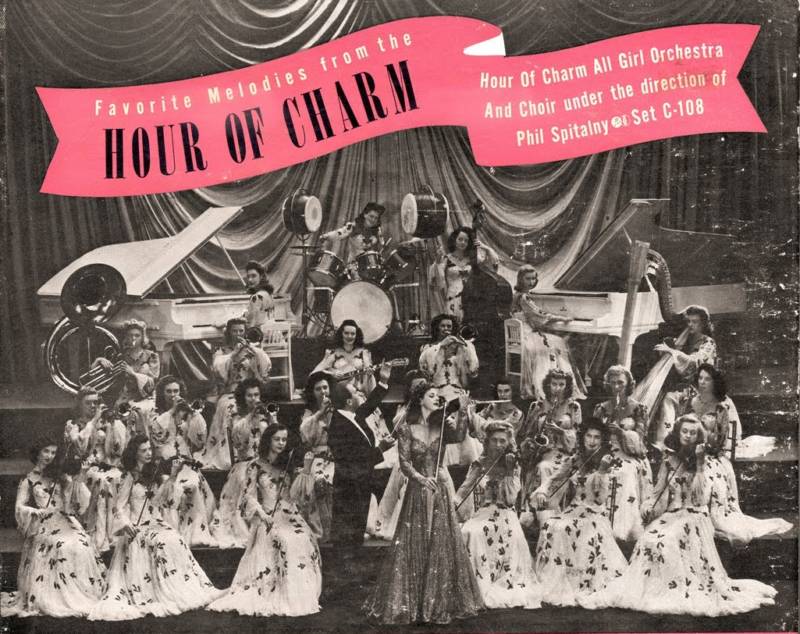With the Hour of Charm Orchestra, the show revolved more around who the performers were and what they looked like rather than the music they produced.
The band was popular in the 1930s and 1940s, and the schtick was that the orchestra was all female — except, of course, for the bandleader and boss, Phil Spitalny.
Spitalny's logic for creating an all-female orchestra was that the music would be more soothing and charming because it was being created by women instead of men. The music was arranged and performed to embody these stereotypical female characteristics.
The all-women marketing scheme that Spitalny devised helped to make his band a hit. For a full dose of the sexism behind his whole concept, here’s what Spitalny told The Etude music magazine in 1938:
If I were seeking an effect of power, of heavy beats, of sort of military precision that commands you against your will, I should certainly not go to work with a group of girls. But the effect desired was one of charm, of mellowness, of floating, elusive persuasion. And so it seemed the most natural logical thing in the world to assemble a band of women and to ask them simply to go on being charming women in their playing.
Right, the most natural logical thing. Who knows how much Spitalny believed what he was spewing about the divide between music made by women and music made by men? But regardless, it resonated. He was able to turn his gimmick into a profitable little affair.
